
Belarus: How an EU-supported project is changing the lives of children with special needs in Navapolack
On 1 September, Navapolack school № 8 opened its doors for the new school year. At the school, known as “school № 8”, an inclusive environment continues to be created thanks to a joint project between the EU and the Navapolack City Executive Committee.
“Every time he leaves home is an important emotional event for him”
16-year-old Daniil Savenok, a 10th grade student at school № 8, was home-schooled last year because it was too hard to move between the floors of his school in a wheelchair. The school’s physics, chemistry and IT classrooms could not be moved from the top floor to the ground floor, where Daniil would have been able to move around without any problems.
However, the introduction of the elevator, as well as a bathroom equipped for easy wheelchair access, have made it possible for Daniil to go back to school. His mother, Natalya Savenok, says that he is now going to school happy.
 Daniil Savenok
Daniil Savenok Daniil Savenok at school wardrobe
Daniil Savenok at school wardrobe
There will also be another two wheelchair users in Daniil’s class. There was previously a sort of electric hoist in the school, but it was so slow that there was not even enough time for three children to use it during breaks. However, all six of the school’s wheelchair users can fit in the new lift, which has been in operation since the end of the last academic year.
Usually, children with musculoskeletal disorders are provided with a helper, typically a teaching assistant. Most of the time, the children’s family members used to carry them up to the top floors. There was even one instance in which a father quit his job and was hired by the school to be his child’s helper. The father would wait for his son in the corridor at the end of lessons and carry him upstairs to the physics and chemistry classrooms:
“The son was comfortable, but the family’s finances suffered. It was also hard for the father to carry both the wheelchair and the boy. This is very hard, especially when it is not a one-off, but something that is happening several times a day.”
As Savenok explains, accessibility has been an issue for all of Daniil’s school life. Savenok says that when her son was in elementary school, the classroom was located on the second floor:
“It is hard to lift a child in a wheelchair, even [when they are] in elementary school. We transferred to home-schooling in the 4th grade but we realised that it was not suitable for our child. To be home-schooled means to communicate with the teacher one-to-one and never see other children. Even though he had a computer, communication on social networks does not replace live communication with one’s peers.
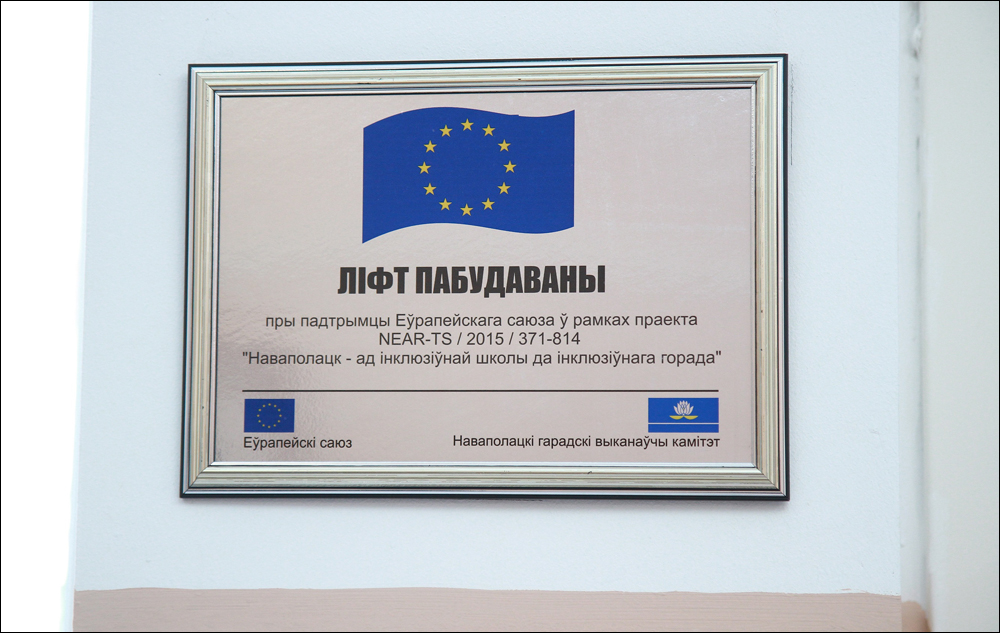 EU supported project helps create inclusive environment at school № 8 in Navapolack
EU supported project helps create inclusive environment at school № 8 in Navapolack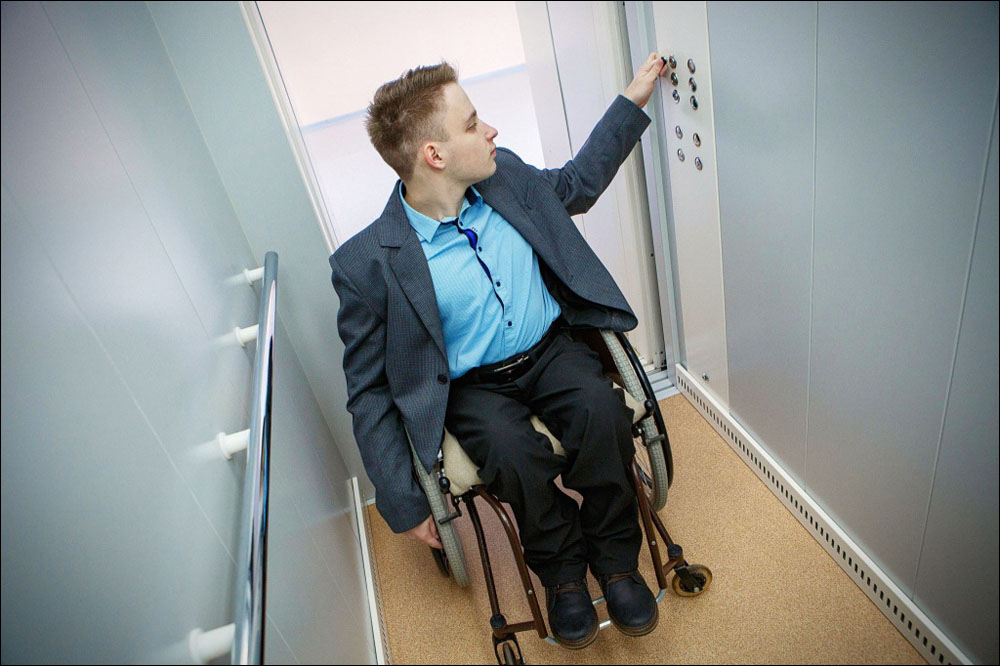 Daniil Savenok inside the school lift
Daniil Savenok inside the school lift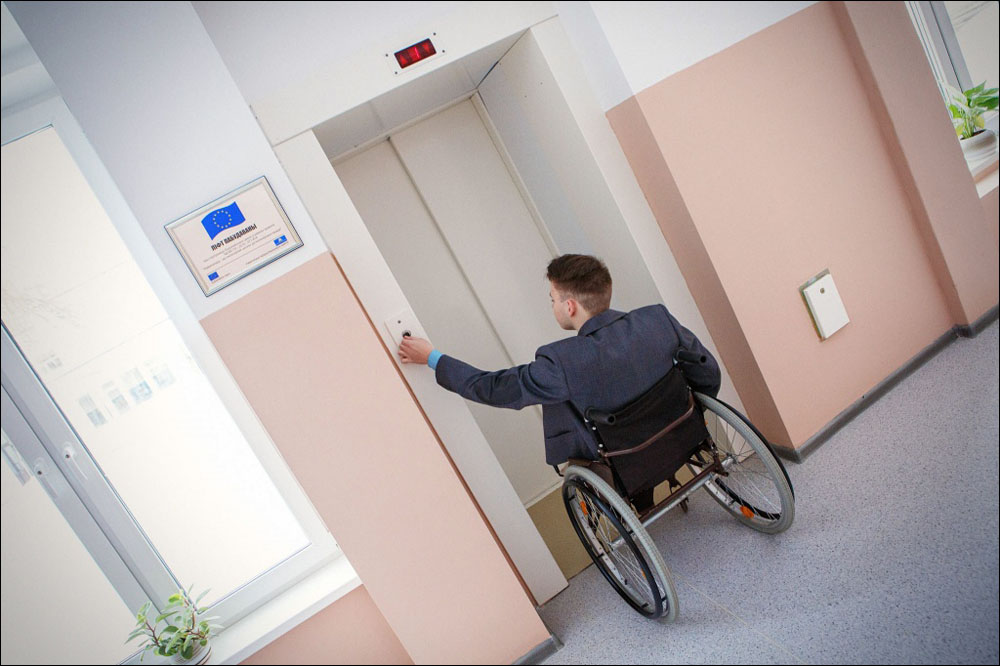 Daniil Savenok enters the school lift
Daniil Savenok enters the school lift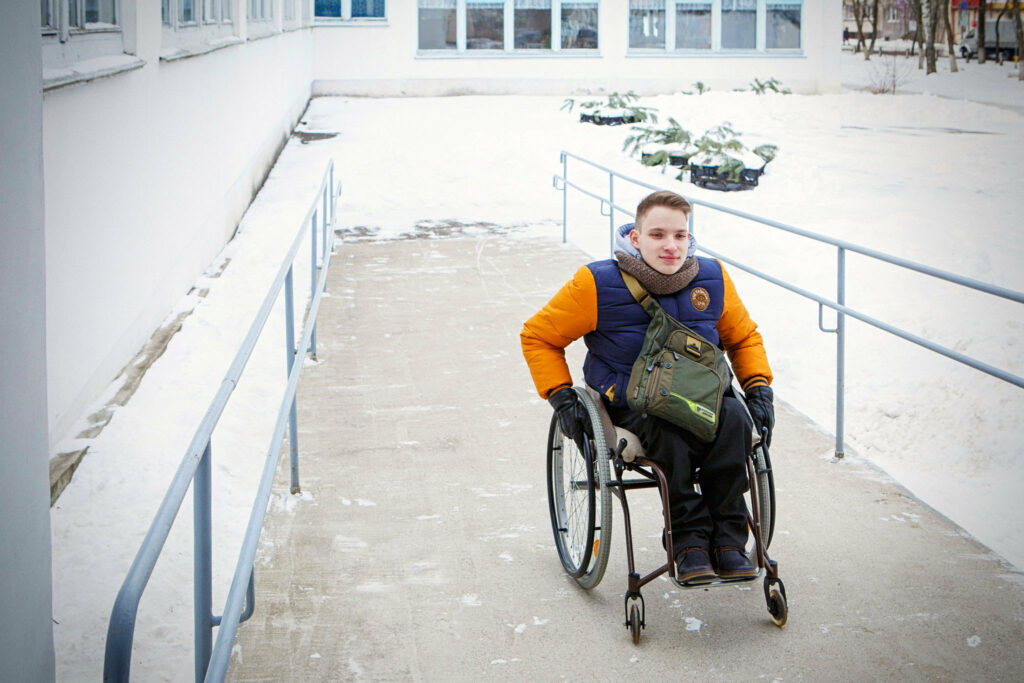 Daniil Savenok
Daniil Savenok
“Daniil can move on his own and he can be on his own at home and on public transport. However, only when a toilet was equipped on his school’s first floor that he could use and the elevator was installed, did a hope appear that Daniil would be able to go to school again,” says Savenok.
Daniil has already tested out the barrier-free school, as Savenok explains:
“In the summer, he worked at the school library. Every time he leaves home is a significant emotional event for him. I work as a teacher at the same school and my son would constantly ask me if I needed anything from another floor. He was always looking for excuses to use the elevator. He was delivering books with great pleasure, and all of this happened because he felt that he was the same as others, that he could go wherever he wanted to. It used to be unpleasant when other children would go up to another floor but he had to wait. Everyone would leave and he would have to stay if there was nobody to help him go to another floor. In this case, mobility helps to preserve dignity. We could have sent him to another school which is closer to home, but now we are planning to stay in school № 8.”
Savenok says that Daniil’s story is typical for children who use wheelchairs: “If the environment were more accessible, there would be more children at schools, [rather than] who have to stay home because of their disabilities. Navapolack is a special city; here, a lot has been done for children with special needs. Our city and our school are a good example of inclusiveness. Life in Navapolack and at school is changing for the better for children with special needs, thanks to the help of the EU project.”
In order to make Navapolack even more accessible for children with special needs, Izumrudnyy camp and the Palace of Youth and Children will be adapted within the framework of the “Navapolack – from an inclusive school to an inclusive city” project.
“So that all children have access to education”
Tatyana Paradnya, a special educational needs teacher and deputy director of academic work, was one of the authors of the project’s application. She says that the idea sprang from a vital necessity. A total of 64 children at the school (18% of the 375 pupils) have special needs.
The school, which has so-called “mixed” classes in which all children study together, needed to create an inclusive environment.
“We would like all children to be able to be educated with us,” says Paradnya. “We want our children to communicate here, which is extremely important for them.”
The elevator is already in place, and soon a new sports playground will be set up on the school grounds to ensure all children can participate in sport at school. Equipment has also been purchased, including eight computers, so that the children are able to study at a distance if necessary. With the help of this equipment, children with special needs will be able to participate in lessons interactively, while physically remaining at home.
“We want to do everything possible so that children who are still home-schooled for some reason can come to school. But children who cannot attend school for medical reasons will be able to participate in school life online,” says Paradnya. “Children should communicate, get an education and have the possibility to have a successful future, irrespective of whether they have a disability.”
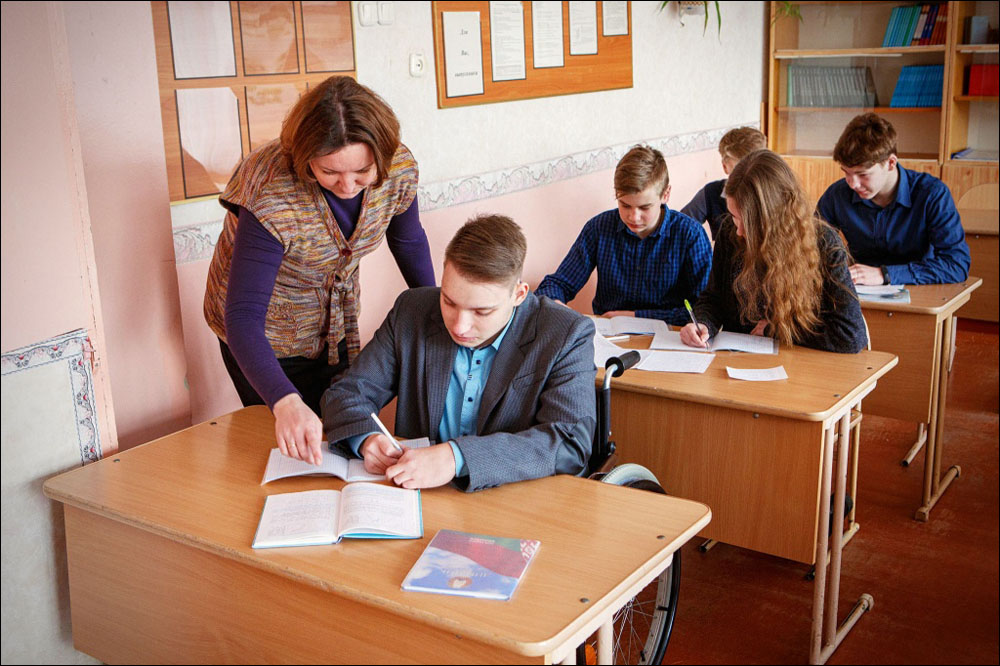 Daniil Savenok in a classroom
Daniil Savenok in a classroom Daniil Savenok
Daniil Savenok
Each school must be inclusive
Tatyana Koroleva, the manager of the “Navapolack – from an inclusive school to an inclusive city” project, says that every school should be inclusive and any child with a disability should have the opportunity to attend an educational establishment close to home.
However, Koroleva adds that this requires not only an appropriate environment, but also a trained faculty.
Natalya Savenok completely agrees. She says that as her own son has special needs, she was well prepared to teach a class including disabled children; she knew how to communicate with them, how to make children with special needs be more sociable. Savenok believes that teachers without similar life experience need additional training. The most important thing, she says, is to show acceptance towards others.
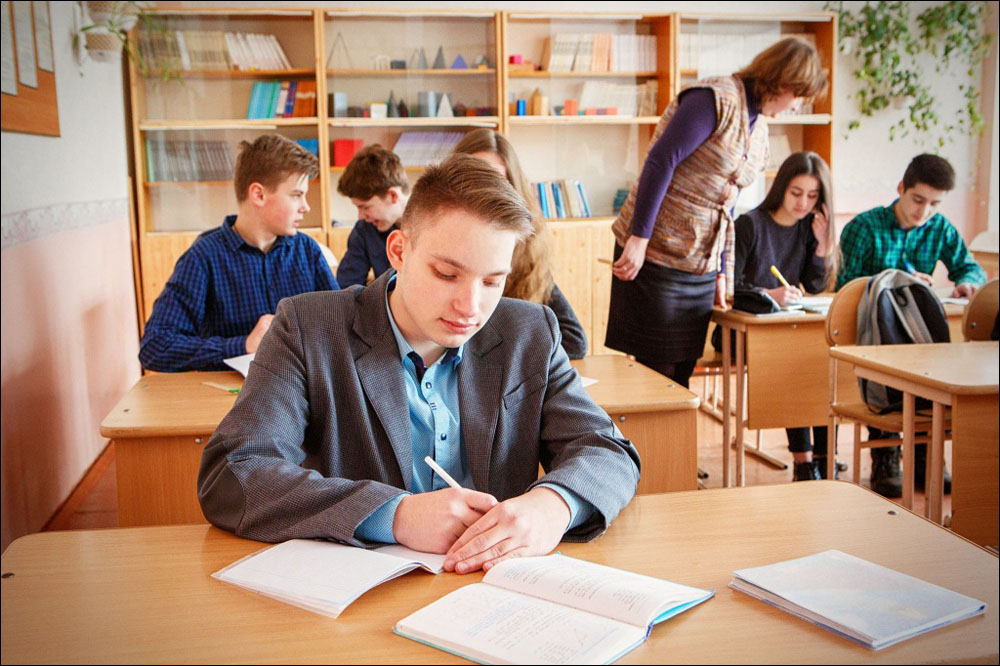 Daniil Savenok in a classroom
Daniil Savenok in a classroom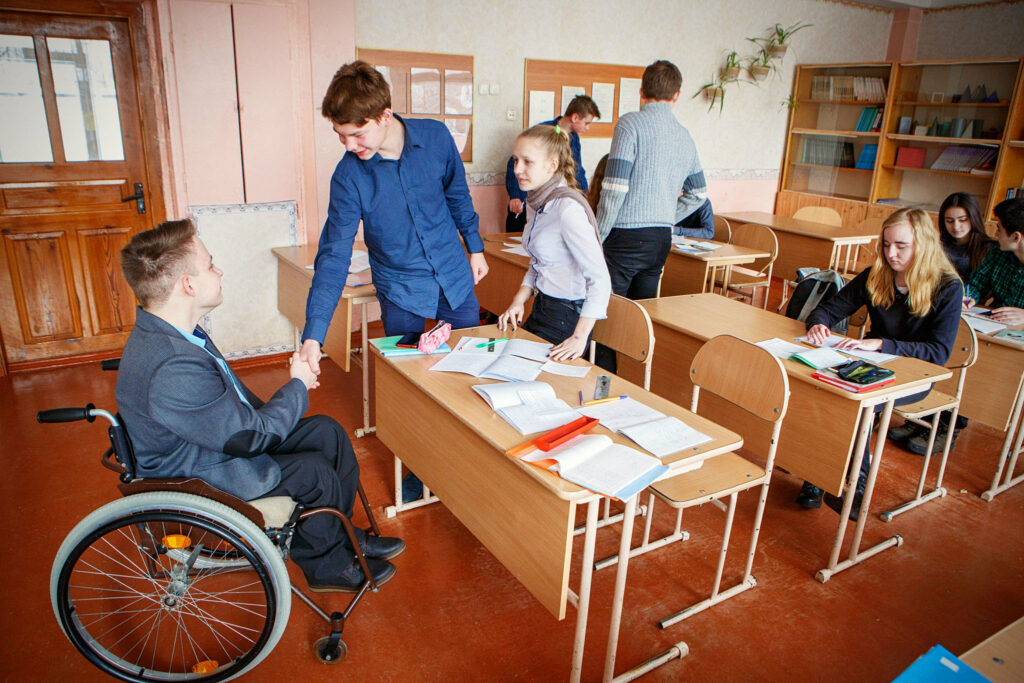 Daniil Savenok with his class mates
Daniil Savenok with his class mates
The mother of one of Savenok’s students says that as soon as her son came to the school, she stopped noticing that he was different from other children.
For Savenok, it’s simple: “When I speak with parents of my students, I tell them that all people are the same,” she says.
***Navapolack applied to implement the EU external assistance project “Navapolack – from an inclusive school to an inclusive city” within the framework of the “Strengthening strategic interaction with the civil society and local authorities in Belarus” programme.
Author: Elena Spasiuk
MOST READ
SEE ALSO
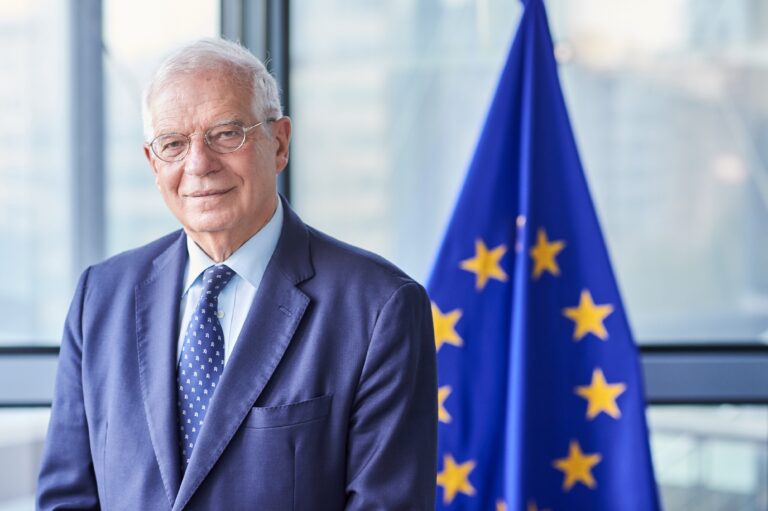
No, time is not on Russia‘s side
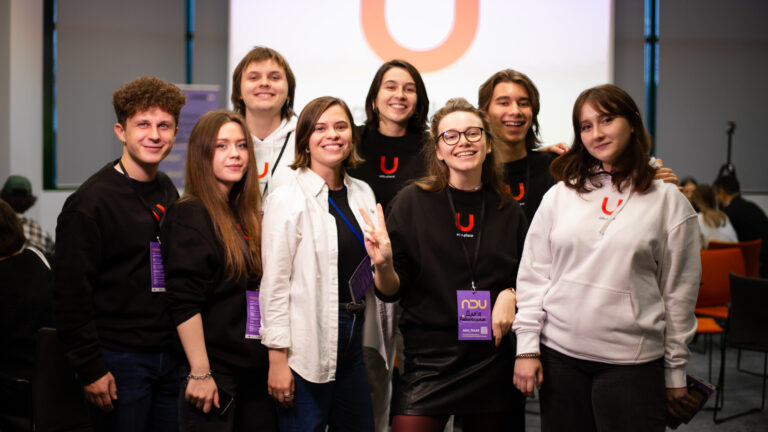
Great opportunities even if you have no money: what the EU offers Belarusian teachers and students

Be one step ahead of a hacker: check simple cybersecurity tips!
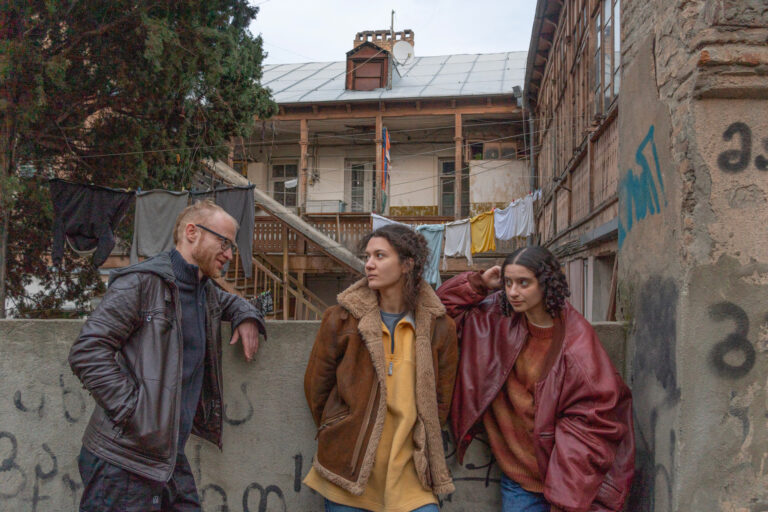
Rhisoma Lab: the intercultural hub for creatives in Tbilisi
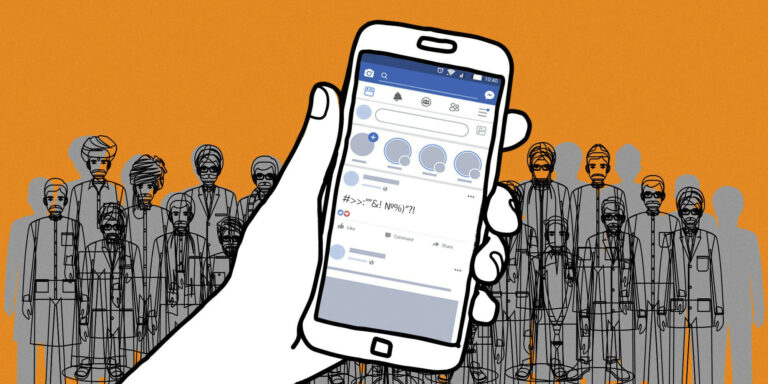
How to act and move on: strategies for women facing discrimination and online harassment
More campaign pages:
Interested in the latest news and opportunities?
This website is managed by the EU-funded Regional Communication Programme for the Eastern Neighbourhood ('EU NEIGHBOURS east’), which complements and supports the communication of the Delegations of the European Union in the Eastern partner countries, and works under the guidance of the European Commission’s Directorate-General for Neighbourhood Policy and Enlargement Negotiations, and the European External Action Service. EU NEIGHBOURS east is implemented by a GOPA PACE-led consortium. It is part of the larger Neighbourhood Communication Programme (2020-2024) for the EU's Eastern and Southern Neighbourhood, which also includes 'EU NEIGHBOURS south’ project that runs the EU Neighbours portal.

The information on this site is subject to a Disclaimer and Protection of personal data. © European Union,







